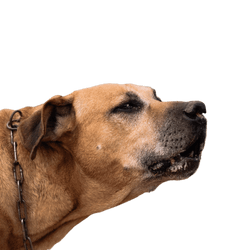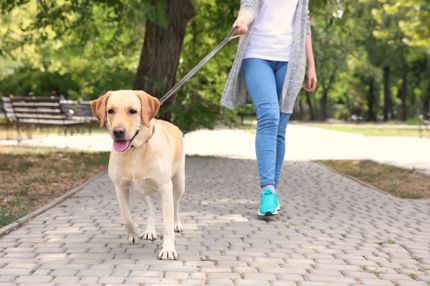Facts & Origin
East Siberian Laika: Origin, History and Suitability
The East Siberian Laika, as its name suggests, originates from the East Siberian region of Russia. This dog was traditionally bred by the indigenous peoples of Siberia and is closely associated with the lifestyles and traditions of this region.
History
The East Siberian Laika has its roots in the ancient hunting dog breeds of Siberia. For centuries, it was used as a hunting and sled dog by the indigenous people of this remote region.
- Initially, this dog was mainly used to hunt big game, such as bears or moose.
- Over time, especially in the 20th century, systematic breeding began to consolidate certain characteristics and abilities. This led to the recognition of the East Siberian Laika as a breed in its own right.
Suitability
The East Siberian Laika is a robust and persistent dog with a strong hunting instinct. His suitability extends over several areas:
- Hunting: With its keen nose and tireless will to work, it is a first-rate hunting dog, especially for big game.
- Sled dog: In his homeland, he is still used as a sled dog, thanks to his strength and endurance.
- Family Dog: Despite his working roots, the East Siberian Laika can also be a loving family dog. However, he needs plenty of exercise and activity and is best suited for active families or individuals who can provide him with the activity and training he needs.
Conclusion
The East Siberian Laika is a testament to the rugged and untouched landscapes of Eastern Siberia. As a hunting and sled dog, he is deeply rooted in the culture and history of this region. For the right person or family, he can be both a loyal working partner and a loving companion.




| Alternate Name | Vostotchno-Sibirskaïa Laïka |
| Origin | Russia |
| Life expectancy | 12 - 15 years |
| Care requirements | high-maintenance |
| Activity level | high |
| FCI group | Nordic Hunting Dogs |
| AKC group | not recognised |
| KC group | not recognised |
Attitude, character and temperament of the breed
Basic character traits
The East Siberian Laika, especially in the black color variety, is known for its strong temperament and intelligence.
- Loyal & Devoted: East Siberian Laikas form a deep bond with their owners and are very loyal.
- Eager to Work: Originally bred for hunting, they are highly energetic and require ample exercise.
- Alert: With a strong protective instinct, they make excellent watchdogs.
Interaction with family & strangers
- Child Friendly: With proper socialization, they can be great family dogs and get along well with children.
- Cautious of Strangers: They can be reserved with strangers at first, but with proper introduction and socialization they become friendlier.
Trainability & Learning Ability
- Intelligent: East Siberian Laikas are quick learners and respond well to positive reinforcement.
- Dominant nature: They can be strong willed, so consistent training is important.
- Active: They need regular physical and mental activities to be content.
Conclusion
The black East Siberian Laika is a dog of strong character, loyal and intelligent. With proper training and employment, he will become a valuable and loving member of any family. His active and alert character makes him an ideal companion for outdoor activities as well as a reliable guardian of the home.
Character
Usage



East Siberian Laika: Care, Health & Breeding
The East Siberian Laika is hardy, but requires regular grooming.
- Coat Care: Due to its dense double coat, it should be brushed at least once a week to prevent matting and remove dead hairs. More frequent brushing may be necessary during the shedding seasons, especially spring and fall.
- Ears and Eyes: These should be checked regularly and cleaned as needed to prevent infection.
- Claws: They should be checked regularly and trimmed as needed.
Health
The East Siberian Laika is generally a healthy dog, but like all breeds, it can be prone to certain diseases.
- Hip dysplasia: A common condition in larger dogs.
- Eye diseases: Some may be genetic.
- It is recommended that regular veterinary examinations be performed to detect potential health problems early.
Breeding
If you are considering breeding an East Siberian Laika, there are a few things to keep in mind.
- Breeding associations: It is advisable to contact reputable breed associations that set standards and health guidelines for the breed.
- Health checks: Potential breeding animals should be tested for known genetic diseases.
- Breedingexperience: Breeding requires expertise and commitment. It is important to be thoroughly educated about the breed, its needs and potential challenges.
Conclusion
The East Siberian Laika is a proud and sturdy dog, but requires regular care and attention to stay healthy and happy. If interested in breeding this breed, strict ethical and health standards should be followed.


East Siberian Laika: coat, appearance, size & weight.
The East Siberian Laika has a dense double coat that protects it from the harsh climatic conditions of Siberia.
- Outer Coat: The outer coat is coarse and of medium length, often being longer on the neck, shoulders and tail, forming a mane.
- Undercoat: Dense and soft, providing excellent protection from cold and wet conditions. Colors range from black and white to gray, red and brown.
Optics
The East Siberian Laika has a wolf-like appearance with a strong build. Its ears are pointed and erect, and its eyes can be brown, blue, or even different colors.
Size & Weight
| Gender | Height (cm) | Weight (kg) |
|---|---|---|
| Males | 55-64 cm | 20-30 kg |
| Bitches | 51-60 cm | 18-25 kg |
Special Characteristics
The East Siberian Laika has an impressive physical presence, which distinguishes him as a hard-working and robust dog. His muscular legs and strong back give him stamina and strength, ideal for long hunting trips or sledding.
Conclusion
With its thick coat and impressive stature, the East Siberian Laika is perfectly adapted to the harsh conditions of its native land. Although hardy and eager to work, it also displays an elegant and majestic charm that makes it a fascinating sight to behold. Regular grooming is recommended to keep the coat clean and healthy.
| Fur length | long |
| Fur | flat coated |
| Ear shape | Standing Ears |
| Tail | rolled up |
| Anatomy | strong, sporty |
| Size ♀ | 50 - 60 cm |
| Weight ♀ | 21 - 30 kg |
| Size ♂ | 53 - 65 cm |
| Weight ♂ | 21 - 30 kg |
| Suitable For | - |





















